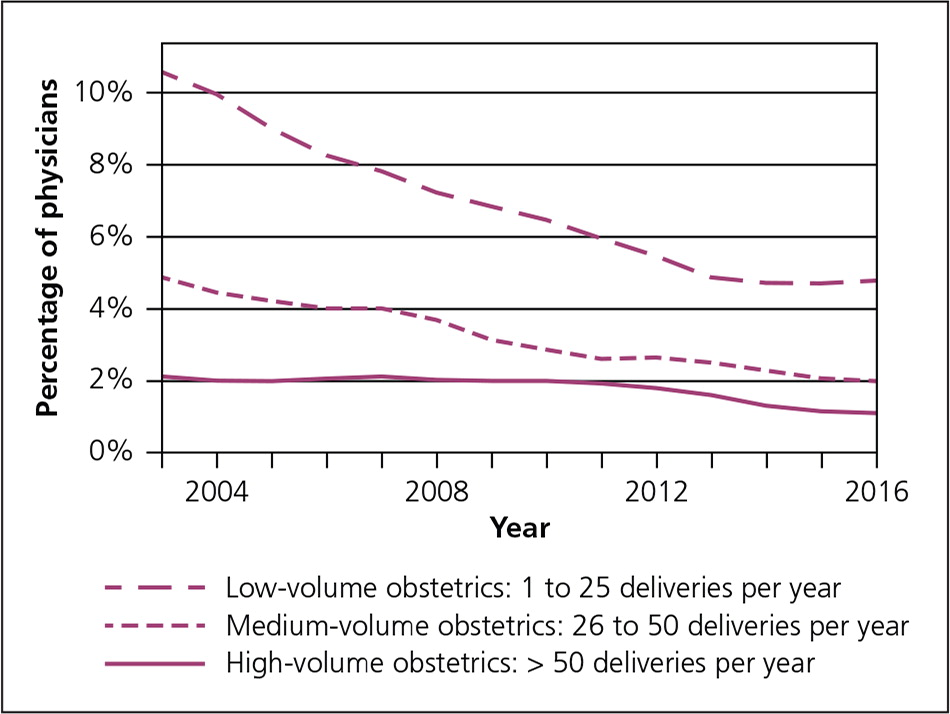
Am Fam Physician. 2017;95(12):762
Author disclosure: No relevant financial affiliations.
Previous research has shown a decline in the percentage of family physicians practicing low- or medium-volume obstetrics. Using 13 years of data through 2016, we found continued declines in low- and medium-volume obstetrics, in addition to a new 50% decrease in family physicians providing high-volume obstetrics.
Previous studies have shown that the percentage of family physicians attending deliveries decreased steadily from 2000 to 2010.1,2 This decline occurred specifically in family physicians providing low-volume (one to 25 deliveries per year) and medium-volume (26 to 50 deliveries per year) obstetrics, whereas the percentage practicing high-volume obstetrics (more than 50 deliveries per year) remained stable near 2%.2 According to the American Congress of Obstetricians and Gynecologists, there will be a projected shortage of 9,000 obstetricians by 2030.3 This combination of a decrease in family physicians attending deliveries and shortage of obstetricians leads to concern for reduced access to care for pregnant women, especially those in rural areas.4
Using data from the American Board of Family Medicine's certification examination registration questionnaire (a mandatory component) from 2003 to 2016, we identified trends in family physicians attending deliveries by volume (Figure 1). Looking at results from 95,750 completed questionnaires, we found a continued decline in the percentage of family physicians attending deliveries in low- and medium-volume categories. From 2003 to 2009, the percentage of family physicians practicing high-volume obstetrics held steady at 2.3% to 2.1%, respectively. However, by 2016 this percentage dropped by nearly 50%, to 1.1%.

Potential responses to growing shortages of obstetric providers could include changing call schedules, lowering barriers to reimbursement and credentialing, and creating other payment or practice incentives to keep family physicians practicing obstetrics. Our finding that there has been a 50% decrease in family physicians providing high-volume obstetric care is concerning because it may be more likely to decrease access to obstetric care than the previously observed declines in low- and medium-volume obstetrics.